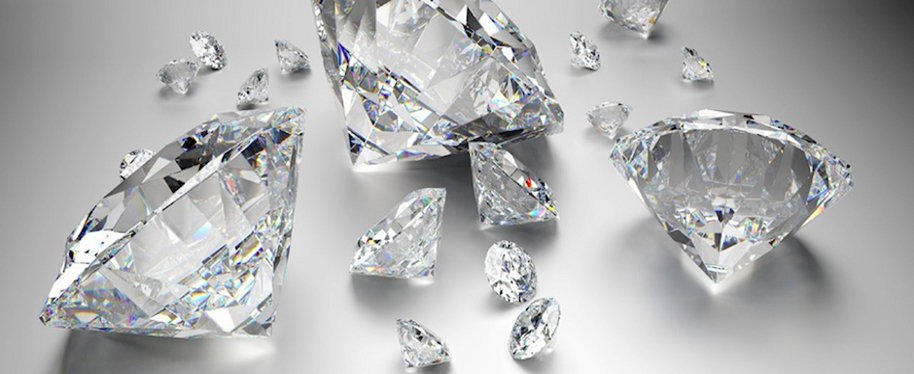
Buying a Diamond

- A diamond is the hardest naturally occurring material; only a diamond can scratch another diamond.
- Diamonds are the only gemstone made of a single element; Carbon.
- The price of a diamond is determined by "the 4 C’s”; caret, colour, clarity and cut.
When purchasing a diamond, ask to see the Certificate; this Certificate should be from an accredited Gemmological Laboratory. It defines the individual diamond's characteristics including caret, colour, clarity, cut, finish, grade and treatments.
If a diamond does not have a certificate and is expensive, ask the jeweller to get one. If the jeweller refuses, it would be very unwise to purchase that stone. Asking for and obtaining a GIA Certificate is a standard practice in the jewellery Industry for expensive items.
The Certificate, if available, should always be included with your documentation when purchasing a diamond. An insurance valuation can also be requested to be supplied.
Wholesale diamonds are priced per carat; you will pay a $ value per carat which is multiplied by the diamond carat weight. Jewellery often will have a TDW on the price tag; this describes the Total Diamond Weight of the item.
Caret = Weight: 1 carat is equal to 0.2gm; the larger the diamond the more expensive.

Colour : the second way a diamond is graded is by colour. White Diamond colour grades range from D to Z; D is colourless and the highest grade; Z is light yellow stone, and the lowest grade.

Diamonds are also available in a range of fancy colours which are very rare and valuable if un-enhanced. True fancy colour diamonds (such as yellows, pinks, and blues) are graded on a separate colour scale.
Clarity : the third way a diamond is graded is by the interior purity of the stone. Diamonds are graded from FL to I with the highest grade being FL.
Under a Microscope
|
VVs |
Vs |
Si |
P |
|
Very, very slight inclusions |
Very slight inclusions |
Slight inclusions |
Inclusions |
Diamond clarity grades are:
FL – flawless - no inclusions or surface blemishes visible under 10 x magnification.
IF - internally flawless - no inclusions but the stone may have some surface imperfections visible under 10 x magnification.
VS1 and VS2VVS1 and VVS2 – Very Very Slight – inclusions are very difficult to see with the unaided eye.
SI1 and SI2 - slightly included - inclusions are larger and may be visible with the unaided eye.
I 1, 2 and 3 - Included – inclusions are visible to the naked eye.
Cut: the fourth way a diamond is graded is by cut, which also includes the shape. The cut of a diamond is the only quality determined by man. Cut is determined by the proportions and finish of the surface. Cut is very important to appearance; a large, clean, high colour stone, if poorly cut, can result in a diamond that has no sparkle or "life”.
Some diamonds also display a characteristic called Fluorescence.
Fluorescence –it is the glow shown when a diamond is exposed to ultra violet light, the glow can be a variety of colours. Not all diamonds have Fluorescence and it is not considered in the grading of a diamond, but can have some affect on the price. The absence or presence of Fluorescence is noted on the certificate.
For further information check the web the GIA website.
http://www.gia.edu/